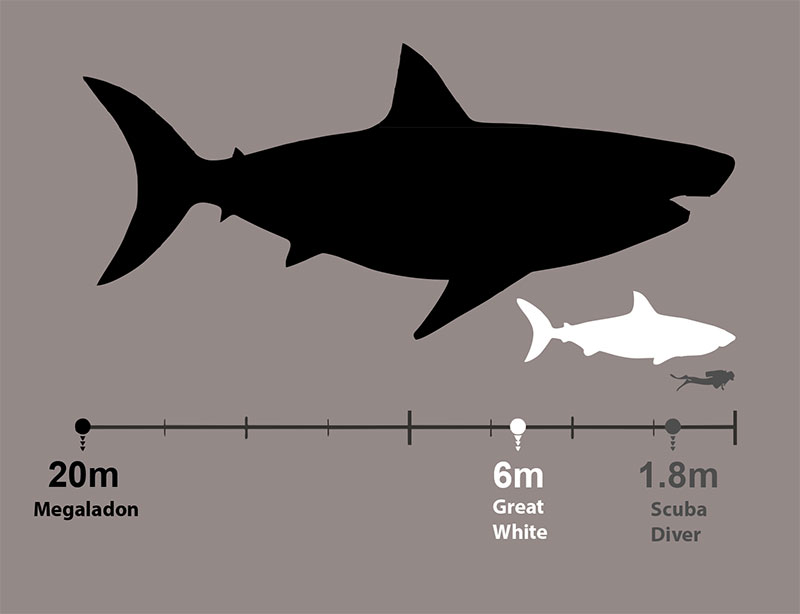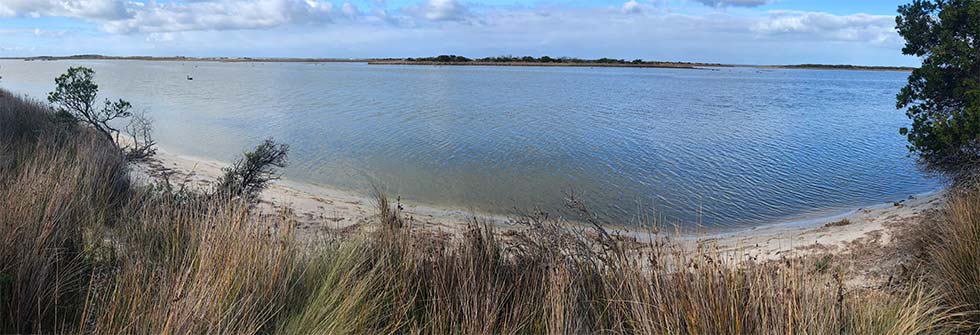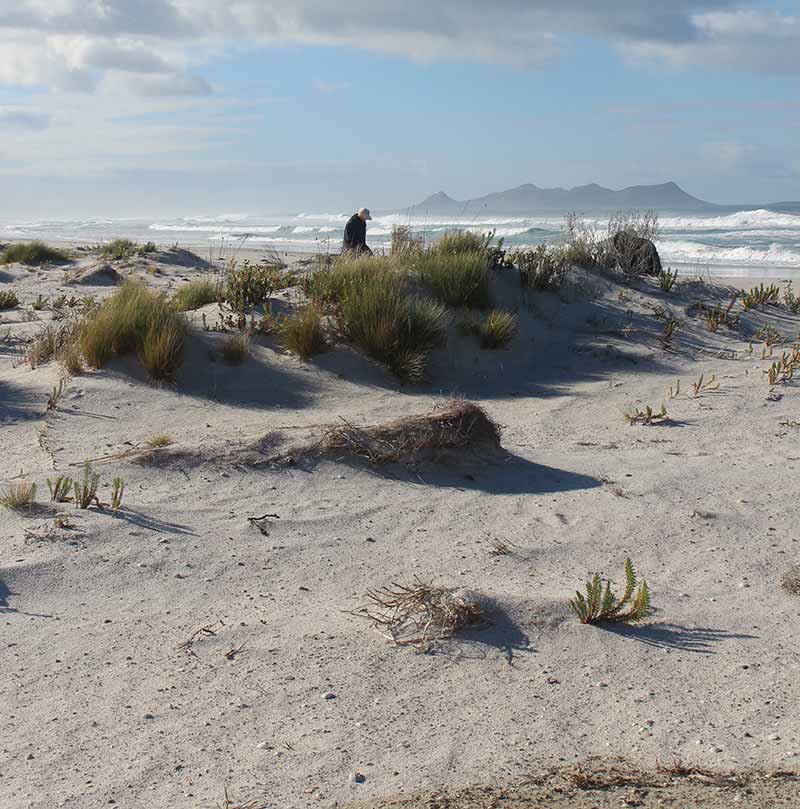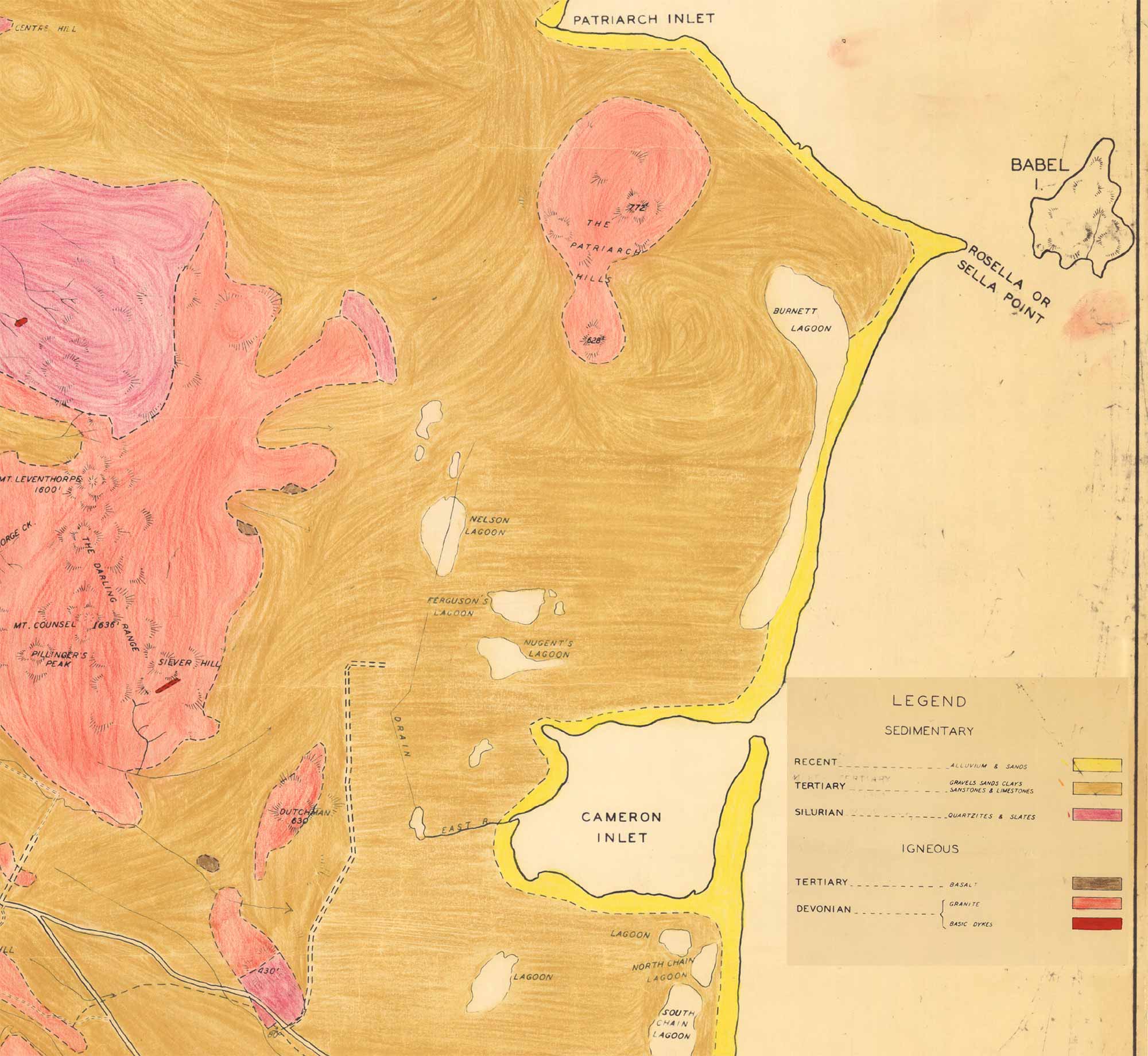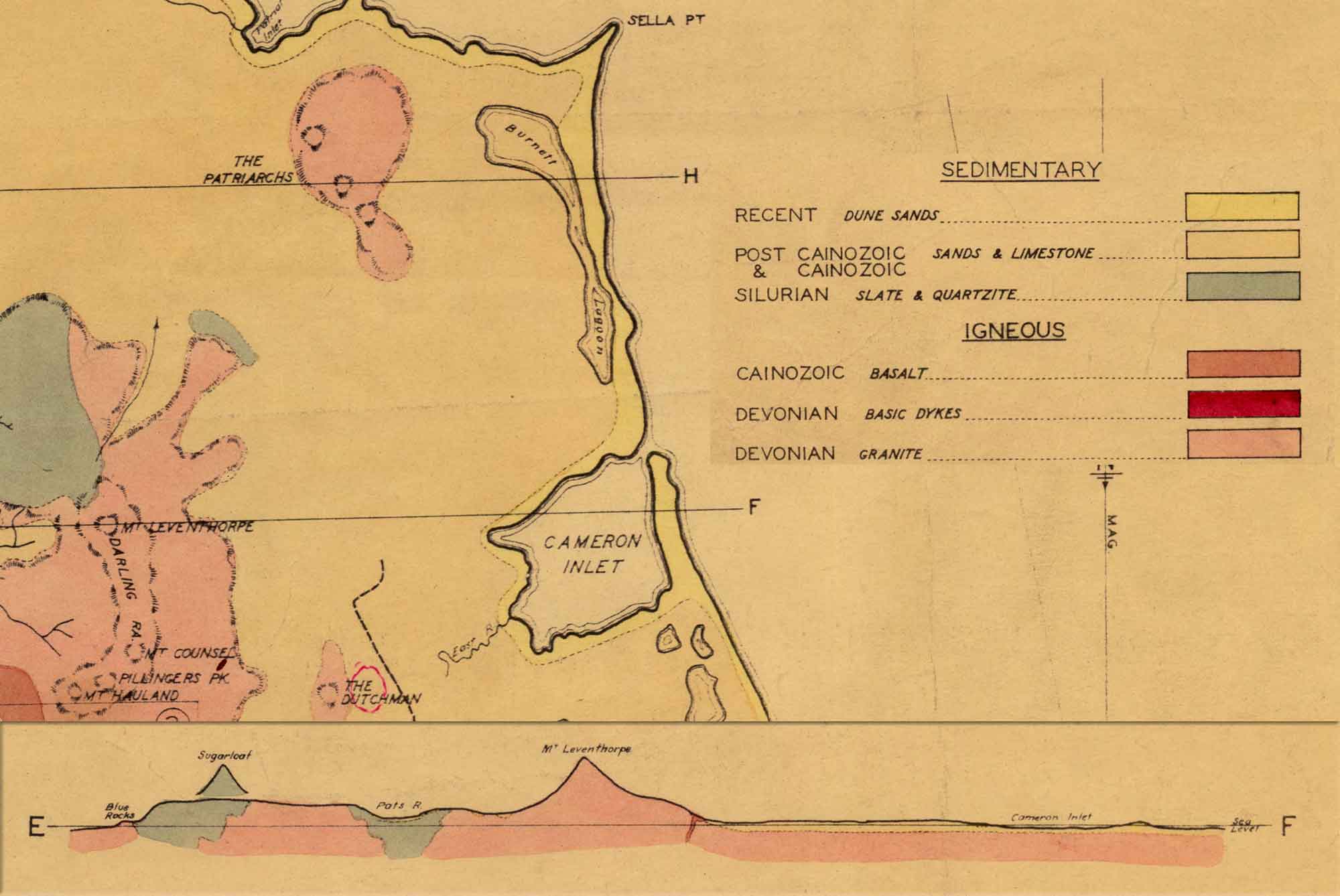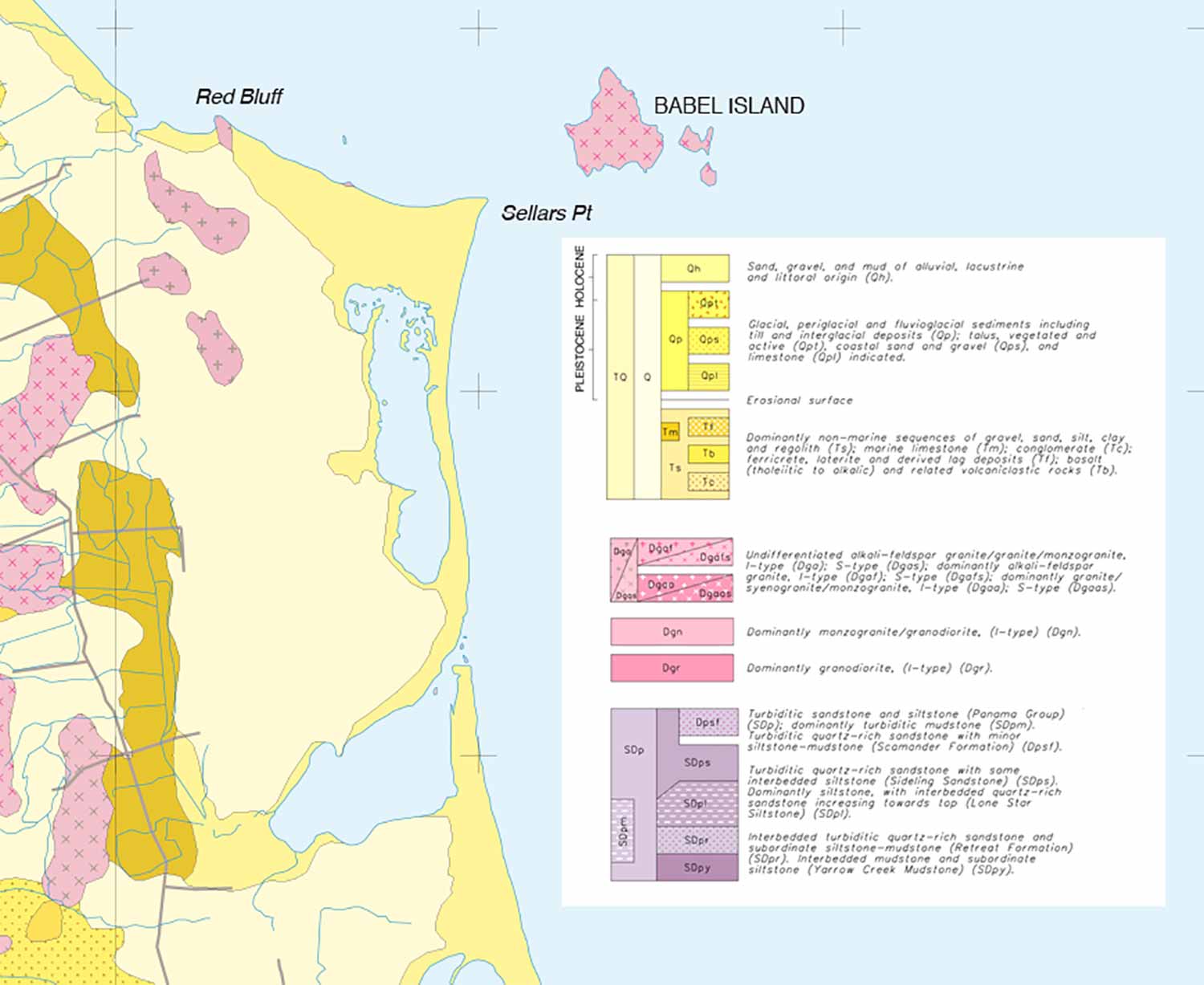Cameron Inlet is best known today for the fossils that wash up on the beach shore after breaking off from a nearby offshore limestone reef.
These ancient relics help date the age of the limestone to around 4 million years ago. They remind us of the crucial role that plant and animal fossils play in dating rock layers back through distant geological ages.
Limestone origins
If you look out carefully on the drive into Cameron Inlet, you can see limestone boulders by the roadside.
The flat area of land was an old sea bed several million years ago when sea levels were much higher than they are today.
Back then, 20 metres of water would have covered the road, and calcareous limestone deposits accumulated on the sea floor.
Today, these limestones are largely covered by recent sand dunes but they extend underneath Cameron Inlet and out to sea.
These underwater reefs south of Babel Island (below) are an attraction for scuba divers.
Fossil sharks teeth
A variety of fossils – including whale bones and shark teeth from a range of species– are routinely broken off from the offshore limestone reef during storms and wash up on the beach here in due course.
The Cameron Inlet area is one of a handful of places in Australia that fossil teeth from the ancient giant shark Carcharocles megalodon (a cousin of the white pointer shark) have been located.
Its name literally means ‘big tooth’. With this giant shark growing to a length of 18 metres, it is one of the largest predators to have ever existed.
The species went extinct around 2.6 million years ago. The presence of this fossil here helps identify the age of the limestone.
